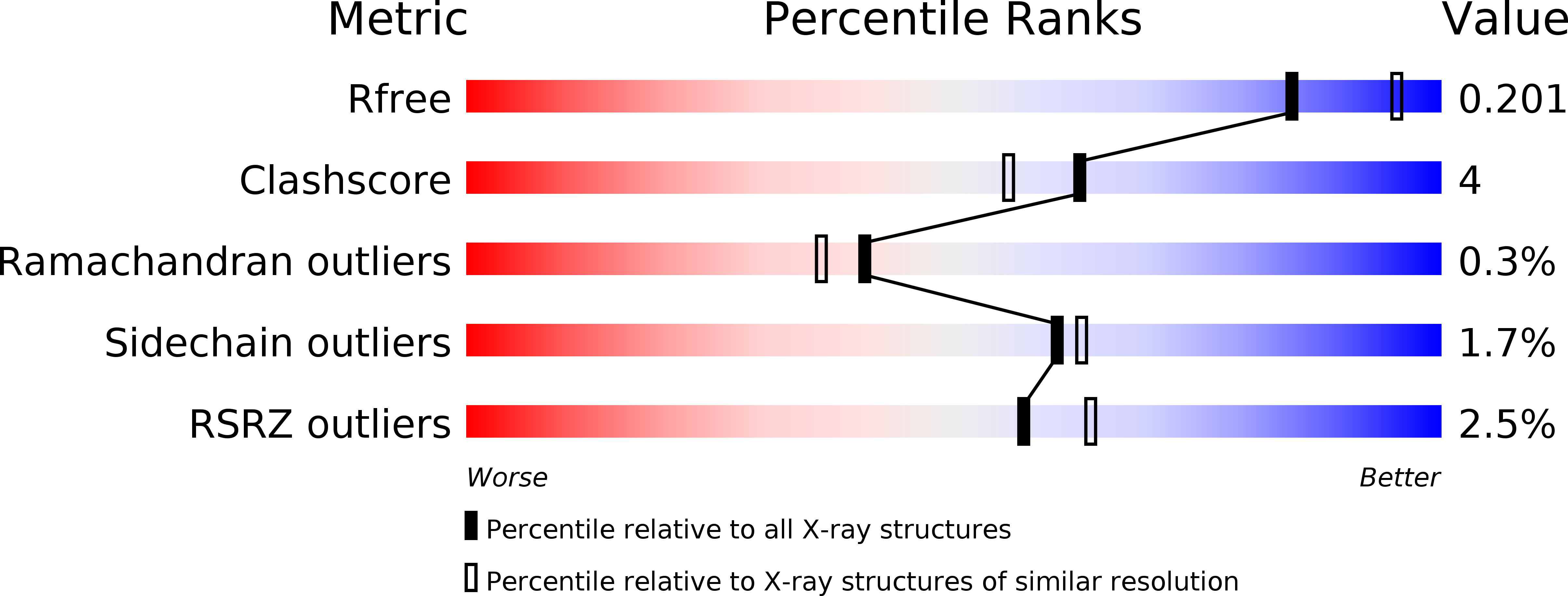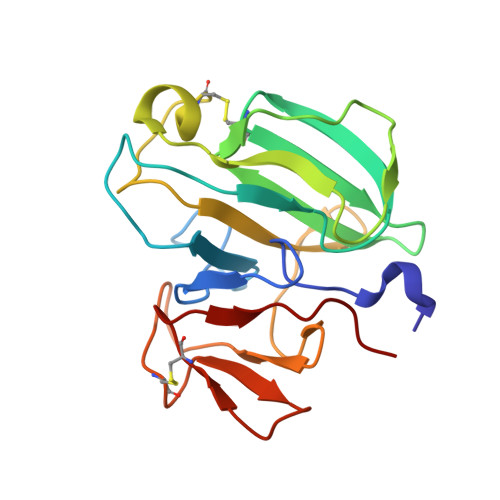Crystal structure of the LasA virulence factor from Pseudomonas aeruginosa: substrate specificity and mechanism of M23 metallopeptidases.
Spencer, J., Murphy, L.M., Conners, R., Sessions, R.B., Gamblin, S.J.(2010) J Mol Biol 396: 908-923
- PubMed: 20026068
- DOI: https://doi.org/10.1016/j.jmb.2009.12.021
- Primary Citation of Related Structures:
3IT5, 3IT7 - PubMed Abstract:
Pseudomonas aeruginosa is an opportunist Gram-negative bacterial pathogen responsible for a wide range of infections in immunocompromized individuals and is a leading cause of mortality in cystic fibrosis patients. A number of secreted virulence factors, including various proteolytic enzymes, contribute to the establishment and maintenance of Pseudomonas infection. One such is LasA, an M23 metallopeptidase related to autolytic glycylglycine endopeptidases such as Staphylococcus aureus lysostaphin and LytM, and to DD-endopeptidases involved in entry of bacteriophage to host bacteria. LasA is implicated in a range of processes related to Pseudomonas virulence, including stimulating ectodomain shedding of the cell surface heparan sulphate proteoglycan syndecan-1 and elastin degradation in connective tissue. Here we present crystal structures of active LasA as a complex with tartrate and in the uncomplexed form. While the overall fold resembles that of the other M23 family members, the LasA active site is less constricted and utilizes a different set of metal ligands. The active site of uncomplexed LasA contains a five-coordinate zinc ion with trigonal bipyramidal geometry and two metal-bound water molecules. Using these structures as a starting point, we propose a model for substrate binding by LasA that explains its activity against a wider range of substrates than those used by related lytic enzymes, and offer a catalytic mechanism for M23 metallopeptidases consistent with available structural and mutagenesis data. Our results highlight how LasA is a structurally distinct member of this endopeptidase family, consistent with its activity against a wider range of substrates and with its multiple roles in Pseudomonas virulence.
Organizational Affiliation:
Department of Cellular and Molecular Medicine, University of Bristol School of Medical Sciences, University Walk, Bristol BS8 1TD, UK. Jim.Spencer@bristol.ac.uk

















